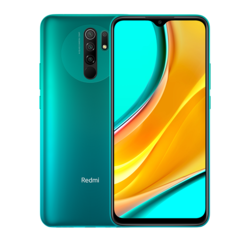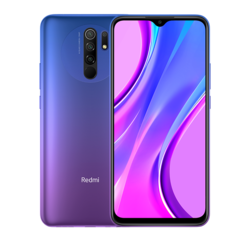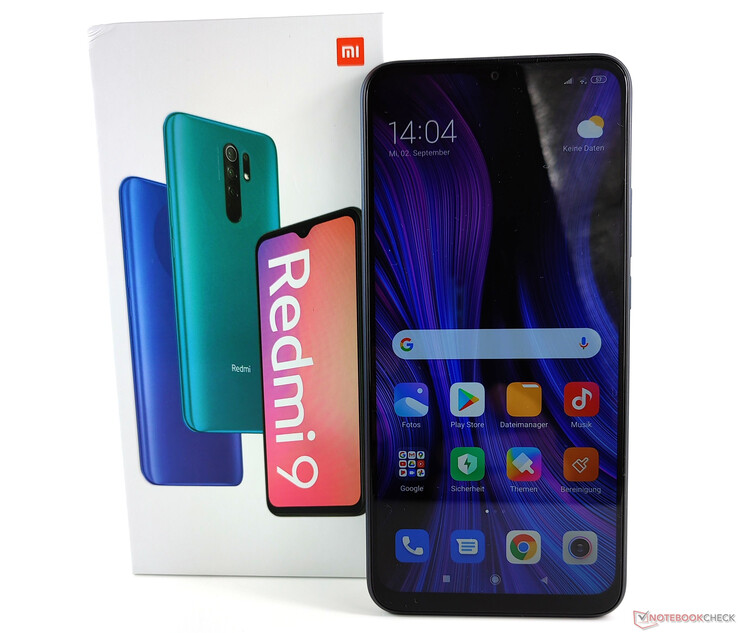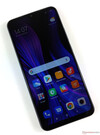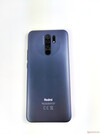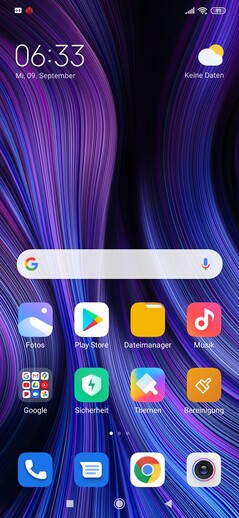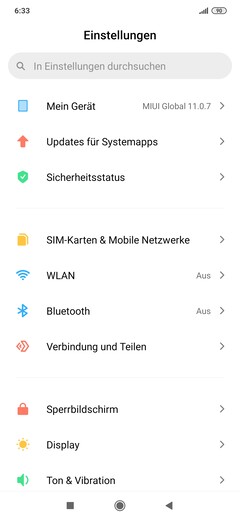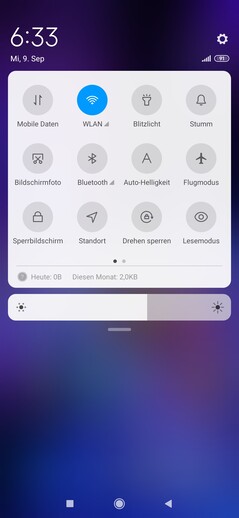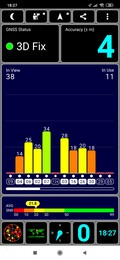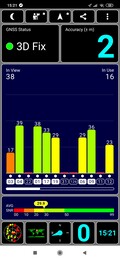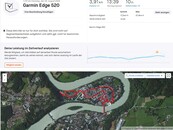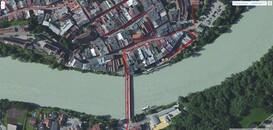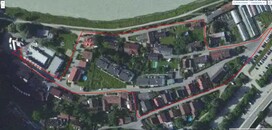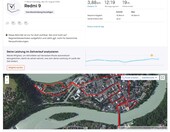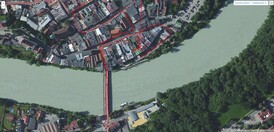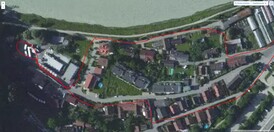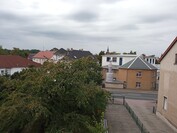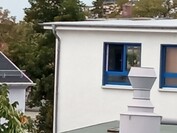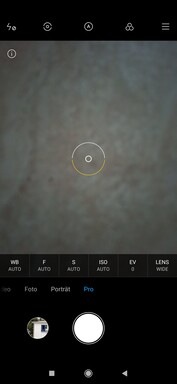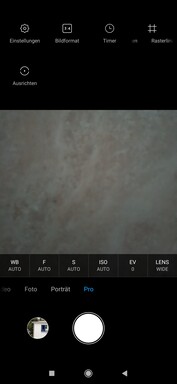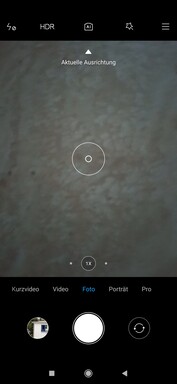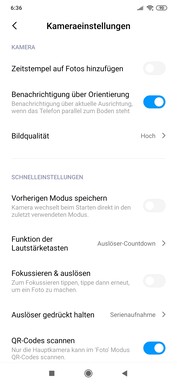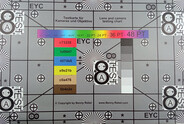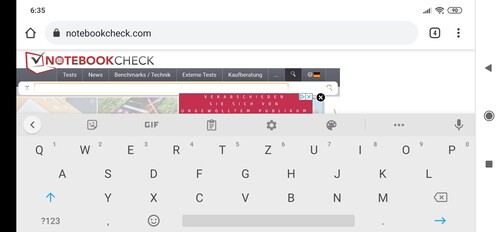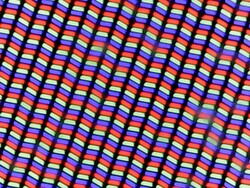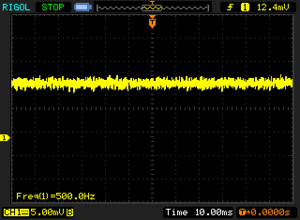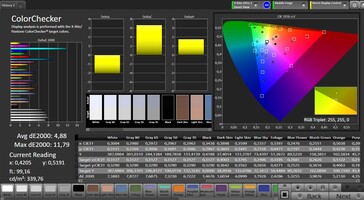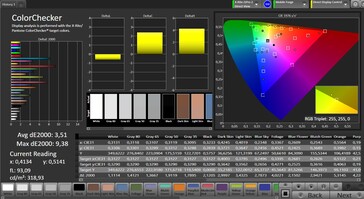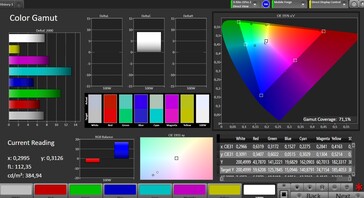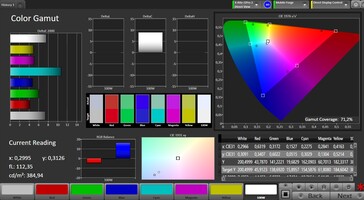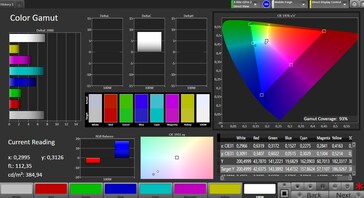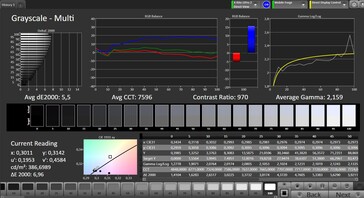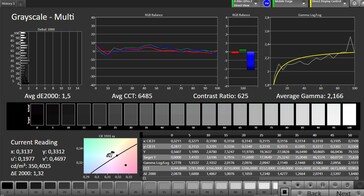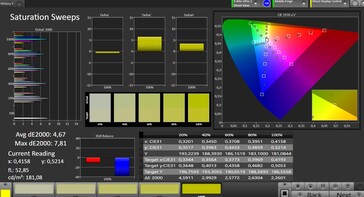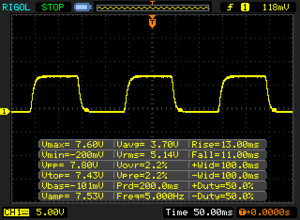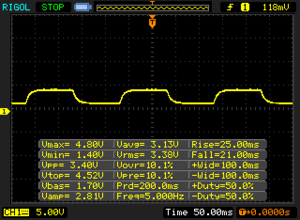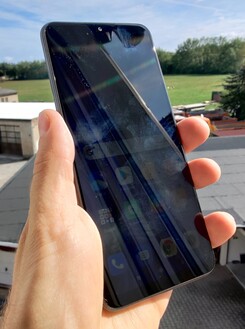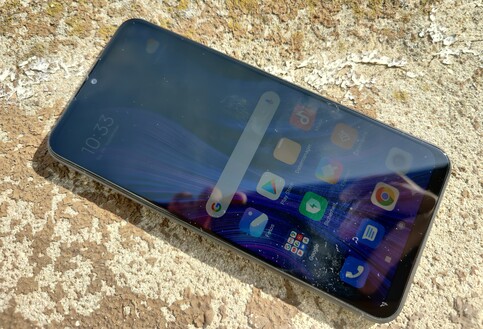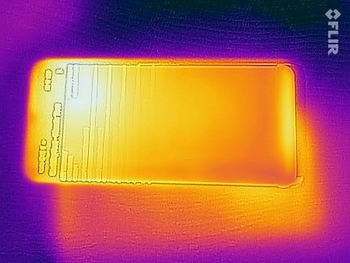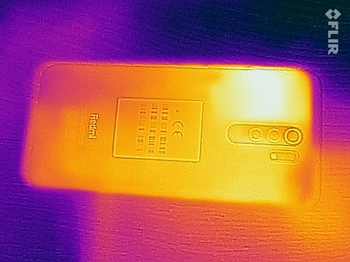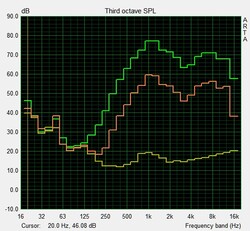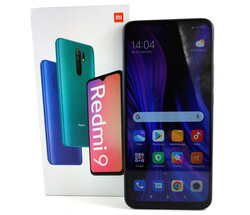Xiaomi Redmi 9 Smartphone Review- Upmarket package at a bargain price
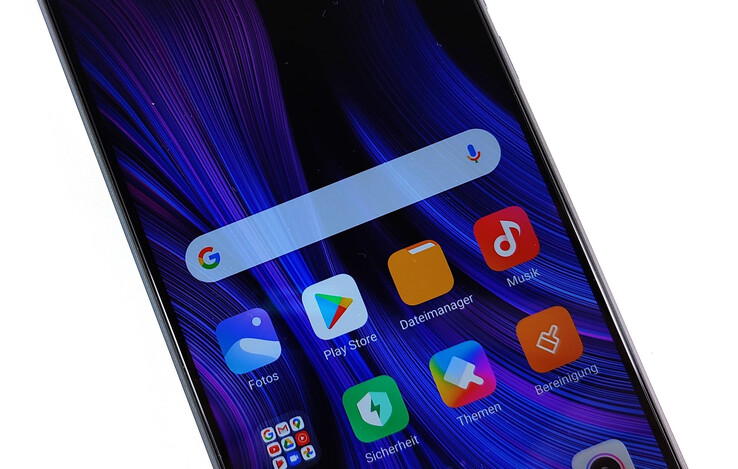
The Redmi 9 is the latest smartphone in Xiaomi’s budget Redmi series. Unlike the predecessor (Redmi 8), which we reviewed at the beginning of the year, the Redmi 9 features a 6.53-inch LCD screen with a native resolution of 2340x1080, which is unheard of in the sub-150-Euro (~$177) price segment. The quad-camera system is another noteworthy feature, because most sub-150-Euro (~$177) smartphones offer a single or dual-camera system.
Our review device comes with the MediaTek Helio G80, 3 GB of RAM and 32 GB of storage space. There is also a version with 4 GB of RAM and 64 GB of internal storage. The Redmi 9 features a large 5020-mAh battery.
The 3 GB version of the Redmi 9 currently retails for 130 Euros (~$154). The model with 4 GB of RAM and 64 GB of internal memory costs about 10 Euros more (€140/~$165). Those who can stomach the risk of importing a smartphone from Asia will be able to get the Redmi 9 for 100-110 Euros (~$118-130).
Comparison Devices
Rating | Date | Model | Weight | Drive | Size | Resolution | Price |
|---|---|---|---|---|---|---|---|
| 77.8 % v7 (old) | 09 / 2020 | Xiaomi Redmi 9 Helio G80, Mali-G52 MP2 | 198 g | 32 GB eMMC Flash | 6.53" | 2340x1080 | |
| 78.2 % v7 (old) | 06 / 2020 | Realme 6i Helio G80, Mali-G52 MP2 | 199 g | 128 GB eMMC Flash | 6.50" | 1600x720 | |
| 73.9 % v7 (old) | 08 / 2020 | Huawei Y5p Helio P22 MT6762, PowerVR GE8320 | 144 g | 32 GB eMMC Flash | 5.45" | 1440x720 | |
| 74.3 % v7 (old) | 01 / 2020 | Nokia 2.3 Helio A22 MT6761, PowerVR GE8300 | 183 g | 32 GB eMMC Flash | 6.20" | 1520x720 | |
| 76.4 % v7 (old) | 08 / 2020 | Samsung Galaxy A21s Exynos 850, Mali-G52 MP1 | 192 g | 32 GB eMMC Flash | 6.50" | 1600x720 | |
| 80.7 % v7 (old) | 05 / 2020 | Xiaomi Redmi Note 9S SD 720G, Adreno 618 | 209 g | 128 GB UFS 2.0 Flash | 6.67" | 2400x1080 |
Case - Xiaomi smartphone with Corning Gorilla Glass
The screen of the Redmi 9 is protected by Corning Gorilla Glass 3. The smartphone features a plastic frame and a concave ribbed back, which is also made of plastic. The back does not feel cheap.
The 6.53-inch IPS display comes with a teardrop notch, which houses an 8 MP image sensor. Because the smartphone has relatively small bezels, it offers an impressive screen-to-body ratio (83%) for a device in this price range.
The build quality of the Redmi 9 is very good, considering the price. The physical buttons sit firmly in their cutouts. The Redmi smartphone does not have an IP certification, which means that it is neither dust- nor waterproof.
Connectivity - Redmi 9 with FM radio
The Xiaomi smartphone has a USB Type-C port on the bottom, which operates at USB 2.0 speeds. The Xiaomi smartphone supports USB OTG functionality. This means that users can connect various peripheral devices to the Redmi 9. For wireless screen mirroring, buyers can utilise Miracast.
Our review device does not have an LED indicator and does not support AOD (Always-On Display) functionality. However, the Redmi 9 offers a 3.5-mm headphone jack, FM radio tuner, face recognition and an IR blaster.
The price of the Redmi 9 becomes obvious when examining the internal storage. The Xiaomi smartphone features 32 GB of eMMC 5.1 memory. However, only 19 GB of internal storage is available to the user, because the rest is occupied by the operating system and preinstalled applications. Those who need more memory can either get the 64 GB version or expand the storage capacity with the help of a microSD card.
Software - Xiaomi smartphone with Android 10
The Redmi 9 runs Android 10 with a custom launcher (MiUI 11) from Xiaomi. We do not know whether the launcher will be updated to the latest version (MiUI 12). The security patches of our review device are up to date. They were last updated in August of 2020.
The slightly outdated launcher (MiUI 11) offers a lot of customisation and an easy-to-use interface. Buyers can watch movies in HD quality on Netflix and Amazon Prime Video, because the Redmi 9 supports Widevine L1 DRM. However, an imported version will only support Widevine L3 DRM.
Communication and Geolocation - Redmi 9 with NFC
The low-priced Xiaomi smartphone features dual SIM functionality, Bluetooth 5.0 and an NFC chip for contactless payments through Google Pay.
The Redmi 9 supports 11 LTE bands, which is not a lot, but it is not unusual for a smartphone in this price range. Having said that, it supports all the LTE bands, which are relevant for Germany, including the increasingly important LTE band 28.
The Redmi 9 offers very good Wi-Fi speeds for a smartphone in this price segment. With our reference-grade router Netgear Nighthawk AX12, the Xiaomi smartphone, which features Wi-Fi 5, achieves data transfer rates of over 300 Mb/s.
| Networking | |
| iperf3 transmit AX12 | |
| Xiaomi Redmi 9 | |
| Samsung Galaxy A21s | |
| Xiaomi Redmi Note 9S | |
| Huawei Y5p | |
| Realme 6i | |
| Nokia 2.3 | |
| iperf3 receive AX12 | |
| Samsung Galaxy A21s | |
| Xiaomi Redmi 9 | |
| Xiaomi Redmi Note 9S | |
| Huawei Y5p | |
| Nokia 2.3 | |
| Realme 6i | |
In order to determine how accurate our review device is when it comes to geolocation, we take it with us on a bike ride. During this ride, we are also accompanied by the professional navigator Garmin Edge 520. There is only a 30-metre difference between the low-priced smartphone and the Garmin Edge 520 at the end of our 4-km ride. The Redmi 9 did not deviate too much from the professional navigator and had no trouble accurately mapping the route we took. This is why the Xiaomi smartphone is suited for navigation when driving. For geolocation, our review device relies on the following global navigation satellite systems: GPS, GLONASS, Beidou and QZSS. The Satellite-based Augmentation System (SBAS) is also supported. Even indoors, the user’s location is acquired relatively quickly and with a margin of error of about four metres.
Telephony and Call Quality - Xiaomi Redmi 9 with dual SIM functionality and VoLTE
The call quality of the Redmi 9 is on a good level. Our call partner describes the quality of the microphone as good - voices are reproduced clearly. Thanks to Wi-Fi Calling, users can make phone calls even in areas with poor cellular reception over Wi-Fi networks. Because the smartphone supports dual SIM dual VoLTE technology, buyers can make calls over LTE networks with the SIM card of their choice.
We encountered no problems when making Skype video calls with the front-facing camera, which is not always the case in this price range. The audio quality in such calls is on a good level.
Camera - Redmi 9 with a quad-camera system
For an entry-level smartphone, the Redmi 9 features a lot of rear cameras. On the back, there are a 13-megapixel main sensor, which comes from OmniVision (OV13B10), an 8-megapixel ultra wide-angle camera, a 5-megapixel camera and a 2-megapixel macro camera, which is also used for depth detection.
The main camera of the Redmi 9 offers a solid level of performance. The colour accuracy and the dynamic range are quite impressive. However, the 13-megapixel images appear quite blurry, especially at the edges. Under low-light conditions, the camera does not produce usable images. The exposure is also suboptimal, which is why images do not appear well-detailed. The Redmi 9 does not feature a night mode, which means that it cannot take multiple images and then stitch them together to improve the quality of night-time shots.
The 8-megapixel ultra wide-angle lens offers a field of view of 118°. It takes considerably worse shots than the main camera. It fails to preserve much of the detail. However, the Redmi 9 has an ultra wide-angle camera and this is not something that other similarly priced smartphones offer.
The video quality is also poor. However, the smartphone can record video at 1080p30. The videos are full of artifacts, which are especially pronounced during motion. The electronic image stabilisation does not help at all. Users cannot switch between the wide-angle lens and the ultra wide-angle camera while recording.
The 8-megapixel front-facing camera can also record video at 1080p. The sharpness is good for an entry-level smartphone and the skin tones also look natural. Under normal lighting conditions, the front-facing camera takes photographs that are suitable for social media platforms. Nevertheless, the images are not well-exposed.
Image comparison
Choose a scene and navigate within the first image. One click changes the position on touchscreens. One click on the zoomed-in image opens the original in a new window. The first image shows the scaled photograph of the test device.
Main cameraLow-light photographyMain cameraUltra wide-angle lensThe main camera produces colour-accurate photographs under controlled lighting conditions. We use the ColorChecker Passport to further analyse the colour reproduction of the 13-megapixel image sensor. The images appear very colour-accurate for a device in this price range, even though they are a bit overbrightened. The light and dark tones are especially well-reproduced.
The fine lines do not appear very sharp in the photographs of our test chart, and at the edges the sharpness drops even further.

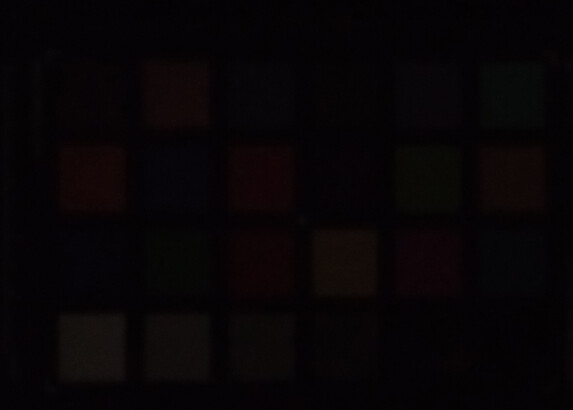
Accessories and Warranty - Redmi 9 with a protective cover
The box contains a modular 10-watt charger with an appropriate USB cable and a protective case.
The Redmi 9 comes with a 12-month warranty. However, in Germany, the warranty duration amounts to 24 months in accordance with the German laws.
Input Devices and Handling - Xiaomi smartphone with facial recognition
The capacitive touchscreen of the Redmi 9 functions well, except in the very corners. The fingerprint sensor on the back leaves a rather good impression. It is not particularly fast, which is not unusual in this price range. However, it is very reliable. As a matter of fact, it is more reliable than in-display fingerprint sensors in many mid-range smartphones. The Redmi 9 also supports facial recognition. The 2D face unlock works reliably and quickly.
Display - Budget smartphone with a 1080p screen
The 6.53-inch LCD screen has a Full HD resolution (2340x1080) and a 19.5:9 aspect ratio. This is why the pixel density amounts to over 400 PPI, which means that the screen content appears sharp in day-to-day use.
The screen brightness is on a normal level for a smartphone in this price range. The brightness distribution is quite poor. With auto brightness enabled and the ambient light sensor engaged, we measured a brightness of 476 cd/m². In our realistically oriented APL50 test, in which the screen displays a pattern that consists of evenly distributed dark and bright areas, the brightness is 1 cd/m² lower.
We observed PWM flickering at 15% brightness and below. However, the frequency of 500 Hz is very high.
| |||||||||||||||||||||||||
Brightness Distribution: 86 %
Center on Battery: 476 cd/m²
Contrast: 710:1 (Black: 0.67 cd/m²)
ΔE ColorChecker Calman: 3.51 | ∀{0.5-29.43 Ø4.77}
ΔE Greyscale Calman: 1.5 | ∀{0.09-98 Ø5}
93% sRGB (Calman 2D)
Gamma: 2.166
CCT: 6485 K
| Xiaomi Redmi 9 IPS LCD, 2340x1080, 6.5" | Realme 6i IPS, 1600x720, 6.5" | Huawei Y5p IPS, 1440x720, 5.5" | Nokia 2.3 IPS, 1520x720, 6.2" | Samsung Galaxy A21s PLS, 1600x720, 6.5" | Xiaomi Redmi Note 9S IPS, 2400x1080, 6.7" | |
|---|---|---|---|---|---|---|
| Screen | -26% | -9% | -28% | -31% | -5% | |
| Brightness middle (cd/m²) | 476 | 518 9% | 515 8% | 515 8% | 540 13% | 622 31% |
| Brightness (cd/m²) | 436 | 484 11% | 502 15% | 488 12% | 509 17% | 612 40% |
| Brightness Distribution (%) | 86 | 89 3% | 89 3% | 92 7% | 91 6% | 94 9% |
| Black Level * (cd/m²) | 0.67 | 0.26 61% | 0.17 75% | 0.23 66% | 0.36 46% | 0.56 16% |
| Contrast (:1) | 710 | 1992 181% | 3029 327% | 2239 215% | 1500 111% | 1111 56% |
| Colorchecker dE 2000 * | 3.51 | 5.8 -65% | 5.85 -67% | 6.1 -74% | 6.58 -87% | 3.98 -13% |
| Colorchecker dE 2000 max. * | 9.38 | 11 -17% | 12.84 -37% | 13.4 -43% | 11.55 -23% | 7.33 22% |
| Greyscale dE 2000 * | 1.5 | 7.3 -387% | 7.4 -393% | 7.7 -413% | 6.4 -327% | 4.5 -200% |
| Gamma | 2.166 102% | 2.23 99% | 2.331 94% | 2.26 97% | 2.206 100% | 2.206 100% |
| CCT | 6485 100% | 8037 81% | 8473 77% | 8639 75% | 8482 77% | 7361 88% |
| Color Space (Percent of sRGB) (%) | 114.9 |
* ... smaller is better
Screen Flickering / PWM (Pulse-Width Modulation)
| Screen flickering / PWM detected | 500 Hz | ≤ 15 % brightness setting | |
The display backlight flickers at 500 Hz (worst case, e.g., utilizing PWM) Flickering detected at a brightness setting of 15 % and below. There should be no flickering or PWM above this brightness setting. The frequency of 500 Hz is relatively high, so most users sensitive to PWM should not notice any flickering. However, there are reports that some users are still sensitive to PWM at 500 Hz and above, so be aware. In comparison: 53 % of all tested devices do not use PWM to dim the display. If PWM was detected, an average of 8081 (minimum: 5 - maximum: 343500) Hz was measured. | |||
The IPS panel offers a black value of 0.67 cd/m². The black value is similarly high in the APL50 test. The contrast ratio is well below 1000:1, because of a high black value of 0.68 cd/m².
Our CalMAN test reveals good colour (Delta E: 3.5) and grayscale (Delta E: 1.5) performance, especially for a product in this price range. The colour temperature of 6485 K is also very good.
Display Response Times
| ↔ Response Time Black to White | ||
|---|---|---|
| 24 ms ... rise ↗ and fall ↘ combined | ↗ 13 ms rise | |
| ↘ 11 ms fall | ||
| The screen shows good response rates in our tests, but may be too slow for competitive gamers. In comparison, all tested devices range from 0.1 (minimum) to 240 (maximum) ms. » 53 % of all devices are better. This means that the measured response time is worse than the average of all tested devices (20.2 ms). | ||
| ↔ Response Time 50% Grey to 80% Grey | ||
| 46 ms ... rise ↗ and fall ↘ combined | ↗ 25 ms rise | |
| ↘ 21 ms fall | ||
| The screen shows slow response rates in our tests and will be unsatisfactory for gamers. In comparison, all tested devices range from 0.165 (minimum) to 636 (maximum) ms. » 78 % of all devices are better. This means that the measured response time is worse than the average of all tested devices (31.6 ms). | ||
Performance - Xiaomi smartphone with Helio G80
The MediaTek Helio G80 is made using the 12-nm manufacturing process and offers eight CPU cores in two clusters. There are two high-performance ARM Cortex-A75 cores with a frequency of up to 2 GHz and six low-energy ARM Cortex-A55 cores with a frequency of up to 1.8 GHz. Thanks to heterogeneous multi-processing, all eight cores can work at the same time. The Mali-G52 is a Bifrost-based GPU from ARM. It supports such APIs as OpenGL ES 3.2 and Vulkan 1.0.
The system feels relatively responsive during normal use. However, when demanding applications are running in the background, the smartphone slows down considerably. In RAM-intensive applications, the Redmi 9 with 3 GB of RAM sometimes completely freezes for a few seconds. Because of slow eMMC internal memory, applications do not launch particularly quickly.
In the system benchmarks, the Xiaomi smartphone performs as well as the realme 6i, which also comes with the Helio G80. However, because the realme smartphone has a 720p screen, it should perform somewhat better in graphically demanding applications. We are only guessing here, because such benchmarking applications as GFXBench and 3DMark cannot be utilised with Xiaomi’s MiUI software.
In the browser benchmarks, we see a similar picture. The Qualcomm Snapdragon 720G in the Redmi Note 9S is significantly ahead. Even though the Redmi 9 loads webpages without any errors, the scrolling on demanding websites is very laggy, which is not unusual for a device in this price range.
| PCMark for Android | |
| Work performance score (sort by value) | |
| Xiaomi Redmi 9 | |
| Realme 6i | |
| Huawei Y5p | |
| Samsung Galaxy A21s | |
| Xiaomi Redmi Note 9S | |
| Average Mediatek Helio G80 (11534 - 12043, n=2) | |
| Work 2.0 performance score (sort by value) | |
| Xiaomi Redmi 9 | |
| Realme 6i | |
| Huawei Y5p | |
| Nokia 2.3 | |
| Samsung Galaxy A21s | |
| Xiaomi Redmi Note 9S | |
| Average Mediatek Helio G80 (6168 - 8795, n=3) | |
| VRMark - Amber Room (sort by value) | |
| Xiaomi Redmi 9 | |
| Realme 6i | |
| Samsung Galaxy A21s | |
| Xiaomi Redmi Note 9S | |
| Average Mediatek Helio G80 (1330 - 1369, n=3) | |
| Jetstream 2 - 2.0 Total Score | |
| Average of class Smartphone (23.8 - 387, n=147, last 2 years) | |
| Xiaomi Redmi Note 9S (Chrome 81) | |
| Average Mediatek Helio G80 (29 - 40, n=8) | |
| Xiaomi Redmi 9 (Chrome 85) | |
| Realme 6i (Chrome 81) | |
| Samsung Galaxy A21s (Chrome 84) | |
| JetStream 1.1 - Total Score | |
| Xiaomi Redmi Note 9S (Chrome 81) | |
| Average Mediatek Helio G80 (54 - 60.8, n=6) | |
| Realme 6i (Chrome 81) | |
| Xiaomi Redmi 9 (Chrome 85) | |
| Samsung Galaxy A21s (Chrome 84) | |
| Speedometer 2.0 - Result 2.0 | |
| Average of class Smartphone (15.2 - 643, n=119, last 2 years) | |
| Xiaomi Redmi Note 9S (Chome 81) | |
| Average Mediatek Helio G80 (21.8 - 32, n=8) | |
| Xiaomi Redmi 9 (Chrome 85) | |
| Realme 6i (Chrome 81) | |
| Samsung Galaxy A21s (Chome 84) | |
| WebXPRT 3 - Overall | |
| Average of class Smartphone (38 - 380, n=30, last 2 years) | |
| Xiaomi Redmi Note 9S (Chrome 81) | |
| Average Mediatek Helio G80 (43 - 60, n=7) | |
| Xiaomi Redmi 9 | |
| Realme 6i (Chrome 81) | |
| Samsung Galaxy A21s (Chrome 84) | |
| Octane V2 - Total Score | |
| Average of class Smartphone (2228 - 126661, n=194, last 2 years) | |
| Xiaomi Redmi Note 9S (Chrome 81) | |
| Average Mediatek Helio G80 (10432 - 12744, n=9) | |
| Realme 6i (Chrome 81) | |
| Xiaomi Redmi 9 (Chrome 85) | |
| Samsung Galaxy A21s (Chrome 84) | |
| Mozilla Kraken 1.1 - Total | |
| Samsung Galaxy A21s (Chrome 84) | |
| Xiaomi Redmi 9 (Chrome 85) | |
| Realme 6i (Chrome 81) | |
| Average Mediatek Helio G80 (3227 - 4076, n=8) | |
| Xiaomi Redmi Note 9S (Chrome 81) | |
| Average of class Smartphone (257 - 28190, n=154, last 2 years) | |
* ... smaller is better
| Xiaomi Redmi 9 | Realme 6i | Huawei Y5p | Nokia 2.3 | Samsung Galaxy A21s | Xiaomi Redmi Note 9S | Average 32 GB eMMC Flash | Average of class Smartphone | |
|---|---|---|---|---|---|---|---|---|
| AndroBench 3-5 | 53% | -16% | 1% | 16% | 68% | -24% | 776% | |
| Sequential Read 256KB (MB/s) | 289.9 | 309.5 7% | 276.5 -5% | 261.8 -10% | 307 6% | 496.6 71% | 242 ? -17% | 2235 ? 671% |
| Sequential Write 256KB (MB/s) | 119.8 | 256.4 114% | 84.9 -29% | 149.2 25% | 104.3 -13% | 214.8 79% | 100.5 ? -16% | 1871 ? 1462% |
| Random Read 4KB (MB/s) | 49.09 | 73.5 50% | 55.2 12% | 69.6 42% | 77.2 57% | 137 179% | 43.1 ? -12% | 297 ? 505% |
| Random Write 4KB (MB/s) | 60.7 | 150.9 149% | 19.3 -68% | 30.33 -50% | 89.5 47% | 123.6 104% | 22.3 ? -63% | 343 ? 465% |
| Sequential Read 256KB SDCard (MB/s) | 84.4 ? | 84.6 ? 0% | 82.7 ? -2% | 83.7 ? -1% | 80 ? -5% | 74.5 ? -12% | 71.8 ? -15% | |
| Sequential Write 256KB SDCard (MB/s) | 65 ? | 64.5 ? -1% | 63.6 ? -2% | 63.7 ? -2% | 66.4 ? 2% | 54.9 ? -16% | 52.9 ? -19% |
Gaming - Redmi 9 with Mali-G52
Both the touchscreen and the motion sensor work very well while gaming. This is why the gameplay experience is quite good, at least on low settings. The Redmi 9 can even achieve a stable 60 FPS in Dead Trigger 2.
In demanding titles such as Asphalt 9 Legends, the Mali-G52 really struggles to maintain a stable 30 FPS even on low settings and frame-rate drops to as low as 10 FPS are quite common. In PUBG Mobile, the Redmi 9 also has trouble hitting 30 FPS on the lowest settings. However, in this title, the performance is more stable as the results of our benchmarks with GameBench show.
PUBG MOBILE
Asphalt 9 Legends
Dead Trigger 2
Emissions - Xiaomi smartphone produces a lot of heat
Temperature
The surface temperatures of the Redmi 9 reach 45 °C (113 °F) under continuous load. However, the temperatures should be much more reasonable in day-to-day use. Normally, we use GFXBench to examine how much heat the SoC produces under constant load. Unfortunately, Xiaomi’s MiUI software does not support this application.
(±) The maximum temperature on the upper side is 43.9 °C / 111 F, compared to the average of 35.2 °C / 95 F, ranging from 21.9 to 247 °C for the class Smartphone.
(±) The bottom heats up to a maximum of 44.8 °C / 113 F, compared to the average of 34 °C / 93 F
(+) In idle usage, the average temperature for the upper side is 30.8 °C / 87 F, compared to the device average of 32.9 °C / 91 F.
Speakers
The mono-speaker on the bottom has a satisfactory maximum volume of almost 84 dB(A). The mids are overrepresented. Nevertheless, they are far from being linear. All in all, the sound reproduction is on a normal level for a device in this price range.
For a stereophonic sound experience, buyers can use a set of headphones, which can be connected via the 3.5-mm headphone jack that functions very well and provides a good volume. Thanks to Bluetooth 5.0, users can also take advantage of wireless headphones and speakers.
Xiaomi Redmi 9 audio analysis
(+) | speakers can play relatively loud (83.7 dB)
Bass 100 - 315 Hz
(-) | nearly no bass - on average 69.2% lower than median
(+) | bass is linear (0% delta to prev. frequency)
Mids 400 - 2000 Hz
(-) | nearly no mids - on average 69.2% lower than median
(+) | mids are linear (0% delta to prev. frequency)
Highs 2 - 16 kHz
(-) | nearly no highs - on average 69.2% lower than median
(+) | highs are linear (0% delta to prev. frequency)
Overall 100 - 16.000 Hz
(-) | overall sound is not linear (119.4% difference to median)
Compared to same class
» 88% of all tested devices in this class were better, 8% similar, 3% worse
» The best had a delta of 11%, average was 35%, worst was 134%
Compared to all devices tested
» 96% of all tested devices were better, 3% similar, 1% worse
» The best had a delta of 4%, average was 24%, worst was 134%
Realme 6i audio analysis
(+) | speakers can play relatively loud (86.4 dB)
Bass 100 - 315 Hz
(-) | nearly no bass - on average 29.7% lower than median
(±) | linearity of bass is average (9% delta to prev. frequency)
Mids 400 - 2000 Hz
(+) | balanced mids - only 4.5% away from median
(+) | mids are linear (5.9% delta to prev. frequency)
Highs 2 - 16 kHz
(+) | balanced highs - only 4.8% away from median
(+) | highs are linear (6.3% delta to prev. frequency)
Overall 100 - 16.000 Hz
(±) | linearity of overall sound is average (21.2% difference to median)
Compared to same class
» 40% of all tested devices in this class were better, 8% similar, 52% worse
» The best had a delta of 11%, average was 35%, worst was 134%
Compared to all devices tested
» 58% of all tested devices were better, 7% similar, 35% worse
» The best had a delta of 4%, average was 24%, worst was 134%
Battery Life - Redmi 9 with a long-lasting battery
Energy Consumption
Even though the Redmi 9 supports 18-watt fast-charging, the box contains only a 10-watt charger, which takes more than 2.5 hours to fully charge the device. Our review device is not particularly energy-effective under load or when idle.
| Off / Standby | |
| Idle | |
| Load |
|
Key:
min: | |
| Xiaomi Redmi 9 5020 mAh | Realme 6i 5000 mAh | Huawei Y5p 3020 mAh | Nokia 2.3 4000 mAh | Samsung Galaxy A21s 5000 mAh | Xiaomi Redmi Note 9S 5020 mAh | Average Mediatek Helio G80 | Average of class Smartphone | |
|---|---|---|---|---|---|---|---|---|
| Power Consumption | 33% | 30% | -6% | -6% | 8% | 4% | ||
| Idle Minimum * (Watt) | 1.4 | 0.37 74% | 0.63 55% | 1.5 -7% | 1.5 -7% | 1.025 ? 27% | 0.847 ? 39% | |
| Idle Average * (Watt) | 1.7 | 1.62 5% | 1.73 -2% | 2.1 -24% | 2.1 -24% | 2.04 ? -20% | 1.446 ? 15% | |
| Idle Maximum * (Watt) | 2.1 | 1.69 20% | 1.76 16% | 2.9 -38% | 2.5 -19% | 2.35 ? -12% | 1.63 ? 22% | |
| Load Average * (Watt) | 5.7 | 3.61 37% | 3.79 34% | 4.6 19% | 5.2 9% | 4.18 ? 27% | 6.95 ? -22% | |
| Load Maximum * (Watt) | 8.5 | 5.9 31% | 4.66 45% | 6.6 22% | 7.5 12% | 6.95 ? 18% | 11.3 ? -33% |
* ... smaller is better
Battery Life
Even though the battery of the Redmi 9 has a very similar capacity to that of the realme 6i, the Xiaomi smartphone fails to achieve similarly impressive battery runtimes. Because of the very high power consumption, the 5020-mAh battery lasts only
13.5 hours in our practically oriented Wi-Fi test, in which the display brightness is limited to 150 cd/m². In our video test, in which the Wi-Fi module is disabled, the Redmi 9 lasts almost 20 hours, which is a very impressive result.
| Xiaomi Redmi 9 5020 mAh | Realme 6i 5000 mAh | Huawei Y5p 3020 mAh | Nokia 2.3 4000 mAh | Samsung Galaxy A21s 5000 mAh | Xiaomi Redmi Note 9S 5020 mAh | |
|---|---|---|---|---|---|---|
| Battery runtime | 64% | 1% | 14% | -1% | 13% | |
| Reader / Idle (h) | 39 | 33.5 -14% | 37.7 -3% | |||
| H.264 (h) | 19.5 | 18.1 -7% | 21.2 9% | |||
| WiFi v1.3 (h) | 13.4 | 22 64% | 13.5 1% | 15.3 14% | 15.7 17% | 19.8 48% |
| Load (h) | 4.8 | 4.8 0% | 4.7 -2% |
Pros
Cons
Verdict for the Redmi 9: Powerful budget smartphone
The package that Xiaomi brings to the table with the Redmi 9 is considerable. No other entry-level smartphone offers a similar assortment of features. An NFC chip, a quad-camera system or a high-resolution IPS panel cannot be found in another similarly priced smartphone.
Nevertheless, the Redmi 9 suffers
from the usual weaknesses of entry-level smartphones. Even though the camera system and the speaker are on a normal level for a smartphone in this price range, objectively they are quite bad. The very slow eMMC memory, the low display brightness and poor performance are all hallmarks of an entry-level device, which is what the Redmi 9 is after all.
There is not much to criticise about the Redmi 9. The Xiaomi smartphone offers a good overall package for price-conscious buyers.
Despite its very good price-to-performance ratio, the Redmi 9 is not alone in this market space. The Chinese manufacturer Xiaomi offers a wide assortment of entry-level smartphones in its Redmi product range. In Europe, there are such devices as the Redmi 9, the Redmi 9A and the Redmi 9C, to say nothing of the Redmi Note 9, the Redmi Note 9 Pro and the Redmi Note 9S. The Note 9S currently retails for about 180 Euros (~$213). This is not far away from what the 4 GB version of the Redmi 9 costs. However, the Note 9S offers more powerful hardware, faster memory and a brighter IPS screen.
Xiaomi Redmi 9
- 09/12/2020 v7 (old)
Marcus Herbrich


